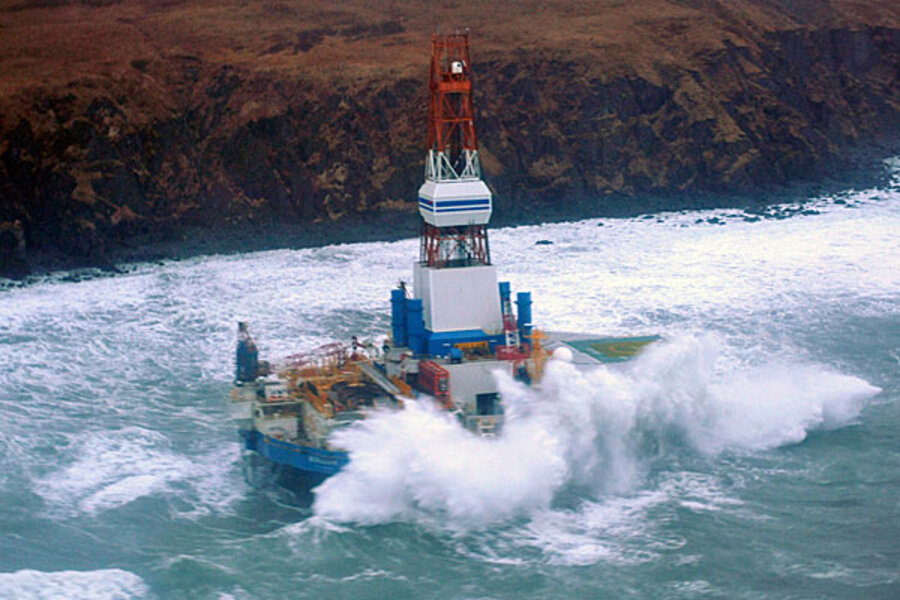Stranded Alaska oil rig: Example of safe practices or Arctic risks?
Loading...
| Anchorage, Alaska
No leak has been seen from a Shell oil drilling ship that grounded off an Alaska island during a storm, officials said, as opponents criticized the growing race to explore the Arctic for energy resources.
Federal on-scene response coordinator Capt. Paul Mehler said the Royal Dutch Shell rig is carrying about 143,000 gallons (541,300 liters) of diesel and about 12,000 gallons (45,425 liters) of lube oil and hydraulic fluid. He said the rig appeared stable.
"There is no sign of a release of any product," Mehler told a news conference.
High seas and strong winds prevented crews from boarding the ship to check for any damage after the large vessel went aground off an uninhabited island in the Gulf of Alaska.
A U.S. Coast Guard plane and a helicopter flew over the Kulluk on Tuesday.
A team of company, Coast Guard and local officials said they were mobilizing spill response equipment and preparing a plan in the event of a spill. The area is home to at least two endangered species, as well as harbor seals, salmon, and sea lions.
The ship grounded during a severe weekend storm while it was being towed to Seattle for maintenance. The storm eased Tuesday.
Mehler said a team of about 500 people was working on a salvage plan, "with many more coming."
A Shell official said the drilling rig was built with a double-sided hull of reinforced steel that is 3 inches (7.6 centimeters) thick. It recently had undergone $292 million in improvements before being put into service for a short time last year in the Beaufort Sea off Alaska's north coast.
Congressman Ed Markey, the top Democrat on the Natural Resources Committee, expressed his concerns in a statement Tuesday.
"Oil companies keep saying they can conquer the Arctic, but the Arctic keeps disagreeing with the oil companies," Markey said. "Drilling expansion could prove disastrous for this sensitive environment."
Sean Churchfield, operations manager for Shell Alaska, said an investigation will be conducted once the situation is under control. He did not know whether the findings would be made public.
The Coast Guard said it would be investigating and would make its findings public.
____
Associated Press staff writers Mary Pemberton and Dan Joling in Anchorage and Donna Blankinship in Seattle contributed to this story.







